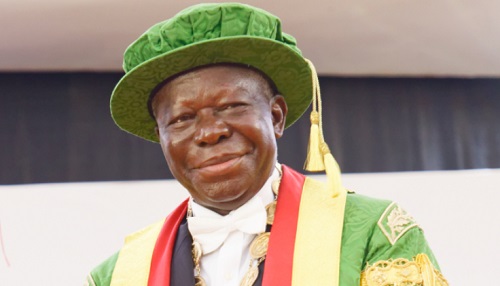Investment firm C-nergy Ghana says even though the economy has doubled in nominal cedi terms since 2017 to 2023, in dollar terms, the economy shrank by 5 per cent.
“In cedi terms, nominal GDP has grown at a compounded rate of 19 per cent year-on-year between 2017 and 2022. In USD terms, however, Ghana’s nominal GDP has grown by less than 5 per cent year-on-year. In 2022, nominal GDP in USD terms actually decreased from USD 79.14bn to USD 72.84 bn”.
This was contained in its 2024 Budget Review Document made available to the Graphic Business.
Reviewing the economy over the past 7 years, C-nergy said nominal GDP has certainly more than doubled from GH₵262 bn in 2017 to over GH₵610 bn in 2022 in nominal terms and was projected to grow to over GH₵850 bn by the end of 2023.
Equally worrying, according to the investment firm, is that the “rapid growth in the country’s Gross Domestic Product (GDP) is on the back of the wholesale and retail trading which gives an indication of the dominance of imports in the country’s economic activity.
The forecast is that Ghana’s GDP will hit the GH₵1 trillion mark in 2024 on the back of a modest 2.8 per cent growth during the year.
Ghana’s nominal GDP in value terms has grown from GH¢262 billion in 2017 and projected to grow at GH¢1 trillion by the end of 2024, Finance Minister, Ken Ofori-Atta, said recently during the Budget reading on November 15.
According to the investment firm, Ghana’s GDP growth forecast of 2.8 per cent for 2023 – 2024 that takes us to the GH₵1 trillion mark is still significantly lower than the forecast for our peers such as Cote d’Ivoire (7.1%), DRC (7.1%), Benin (6.1%), Kenya (5.8%).
Some analysts have suggested that the talk of GH¢ 1 trillion economy should be inclusive; this was echoed by C-nergy, saying “we can only celebrate this as a milestone if it is an improvement in productive activity driven by an expansion in industrial, agricultural or services activity which drives employment, macroeconomic stability, greater equality in income distribution and above all a better standard of living for the ordinary Ghanaian”.
In addition, the GH¢1 trillion can be trumpeted as an achievement if it puts Ghana on the pedestal of the league of flourishing developing countries.
In essence, attaining the GH₵1 trillion mark is worth mentioning, but may not necessarily represent any remarkable growth in domestic output.
It may not necessarily reflect an improvement in standard of living (from a per capita GDP growth perspective) or better purchasing power for the ordinary Ghanaian.
Sectoral Analysis
Touching on government flagship programmes, the investment firm noted for instance that while there have been tremendous achievements under the Free Senior High School (Free SHS) policy over the past seven years, expenditure on education was still far below our peers in the sub-region.
Ghana’s expenditure on education is 2.9 per cent of GDP as compared to 3.6 per cent in the sub-region.
To this the investment firm recommended additional funding to the educational sector to make the country a net exporter of human resources in the sub-region,
It also called for investment in the basic level as investments in that sector has slowed since the advent of the Free SHS policy.
Roads Infrastructure
C-nergy noted the investments in the road sector was commendable.
It, however, suggested that the completion of the three major roads, the Accra-Tema Motorway, the Accra-Takoradi and the Accra-Kumasi highway would have significant impact on the cost of doing business and food prices in the country.
“Perennial delays in issuing payment to road contractors for completed work is the most cited factor dampening appetite for road investments in Ghana. Interventions such as road bonds, road tolls and aggressive Public Private Partnership hunting are needed,” it stated among other recommendations.
1D1F
C-nergy analysis recommended that the 1D1F must focus on manufacturing products for which Ghana has a competitive advantage.
“Our abundant arable land, youthful population and agriculture-friendly climate to name but a few make the case for why our industrialisation strategy must revolve around the agriculture sector,” it said.
Leveraging the agro-processing industry would be prudent as the majority of our agricultural exports are unprocessed. The hurdles to successful industrialisation centred on agro-processing are fewer than those of the many other industries under the 1D1F (e.g. steel and aluminium fabrication) for which feedstock remains a challenge.
Processing staple foods such as rice, tomatoes, cassava would easily lead to import substitution and increased exports in due course.
The success of local fruit juice brands Ekumfi Juice and Blue Skies in export markets is evidence of the huge potential for the agro-processing industry to spearhead industrialisation, the investment concluded.
Source: GraphicOnline






